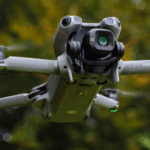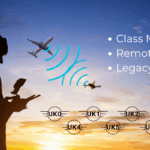In the aftermath of the devastating Grenfell Tower disaster, the importance of rigorous building inspections, particularly for high-rise cladding, has been starkly highlighted.
This tragic event underscored the necessity for enhanced safety protocols and expedited inspections across numerous tower blocks. As industries strive for innovation in safety and efficiency, drone technology has emerged as a pivotal tool, offering a swift, efficient, and cost-effective solution to these urgent needs.
Rethinking Traditional Inspection Methods
Historically, traditional inspection methods such as scaffolding and rope access have been the cornerstone of high-rise building examinations. However, these methods come with inherent limitations that can severely hinder their efficacy:
- Extensive Planning and High Costs: Traditional methods require significant logistical planning and are time-consuming to set up, which translates to higher costs in terms of both time and resources.
- Safety Risks: These methods expose human inspectors to potentially dangerous situations, making safety a constant concern.
- Inefficiency and Limited Access: The physical limitations of scaffolding and rope access restrict the areas inspectors can evaluate, often resulting in less thorough inspections.
Advantages of Drone Technology in Facade Inspection
Drones, equipped with cutting-edge imaging and sensory technologies, can swiftly navigate around buildings to perform detailed inspections. This approach not only enhances safety but also improves the depth and breadth of data collection:
- Cost-Effectiveness and Enhanced Efficiency: Drones significantly reduce the manpower and extensive setups traditionally required, lowering both direct and indirect costs while speeding up the entire inspection process.
- Improved Safety Measures: By utilising drones, the risk to human inspectors is drastically minimised, as they no longer need to physically scale buildings or access perilous heights.
- High-Quality Data Acquisition: Drones capture high-resolution images and generate precise data, enabling a detailed analysis of the cladding’s condition. This level of detail supports proactive maintenance strategies and helps in identifying potential issues before they escalate.
- Scalability and Repeatability: The ease of deploying drones allows for regular and consistent inspections, which are crucial for maintaining long-term safety standards and compliance with evolving regulations.
Harnessing 3D Interactive Models and Data Sharing
The integration of drone technology in building inspections also facilitates the creation of 3D interactive models of structures. These models provide an immersive visual representation that can be incredibly valuable for engineers, architects, and safety teams to collaboratively analyze and assess the condition of the building. Furthermore, drones enable the large-scale collection and sharing of data among multiple stakeholders, streamlining communication and decision-making processes. This capability is particularly crucial in scenarios where timely and coordinated responses are necessary to address safety concerns or compliance issues.
Long-Term Benefits and Sustainability
The strategic use of drones goes beyond immediate safety benefits and cost savings. It represents a shift towards sustainable practices in building management. Regular and detailed inspections by drones help in creating a comprehensive digital archive of a building’s health over time. This digital library becomes an invaluable asset for predictive maintenance, regulatory compliance, and future planning, ensuring that buildings not only meet current safety standards but are also prepared for future challenges.
As the building industry continues to evolve in the post-Grenfell era, the integration of drone technology in safety protocols is becoming increasingly critical. Drones offer a robust solution to the complex challenges of high-rise building inspections, combining efficiency, safety, and advanced data analytics. By embracing drone technology, the industry can ensure that the lessons learned from past tragedies translate into proactive strategies for building safety, preserving lives and properties with unprecedented precision and foresight.
Author: Rebecca Jones






